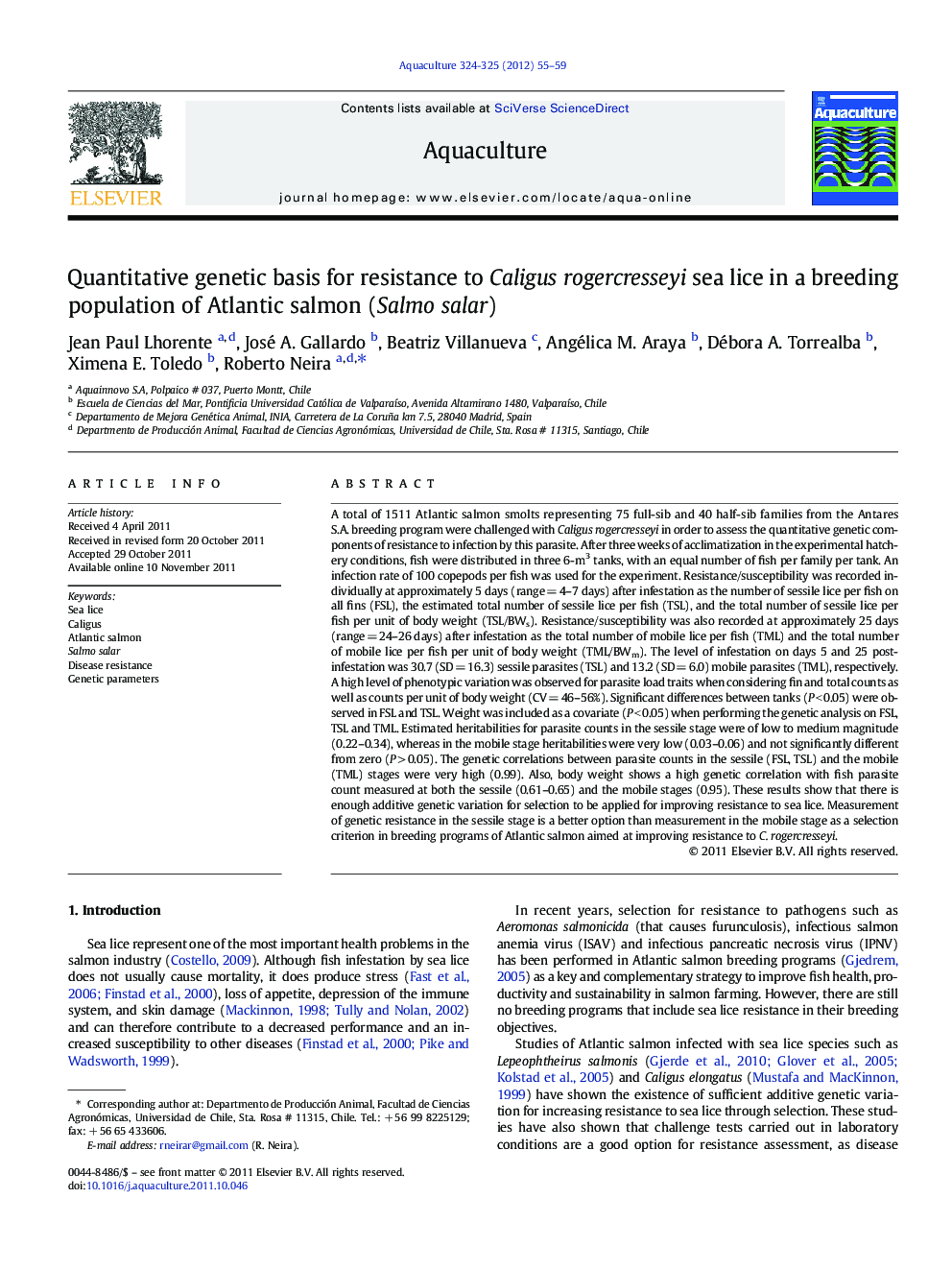| کد مقاله | کد نشریه | سال انتشار | مقاله انگلیسی | نسخه تمام متن |
|---|---|---|---|---|
| 2422758 | 1552897 | 2012 | 5 صفحه PDF | دانلود رایگان |

A total of 1511 Atlantic salmon smolts representing 75 full-sib and 40 half-sib families from the Antares S.A. breeding program were challenged with Caligus rogercresseyi in order to assess the quantitative genetic components of resistance to infection by this parasite. After three weeks of acclimatization in the experimental hatchery conditions, fish were distributed in three 6-m3 tanks, with an equal number of fish per family per tank. An infection rate of 100 copepods per fish was used for the experiment. Resistance/susceptibility was recorded individually at approximately 5 days (range = 4–7 days) after infestation as the number of sessile lice per fish on all fins (FSL), the estimated total number of sessile lice per fish (TSL), and the total number of sessile lice per fish per unit of body weight (TSL/BWs). Resistance/susceptibility was also recorded at approximately 25 days (range = 24–26 days) after infestation as the total number of mobile lice per fish (TML) and the total number of mobile lice per fish per unit of body weight (TML/BWm). The level of infestation on days 5 and 25 post-infestation was 30.7 (SD = 16.3) sessile parasites (TSL) and 13.2 (SD = 6.0) mobile parasites (TML), respectively. A high level of phenotypic variation was observed for parasite load traits when considering fin and total counts as well as counts per unit of body weight (CV = 46–56%). Significant differences between tanks (P < 0.05) were observed in FSL and TSL. Weight was included as a covariate (P < 0.05) when performing the genetic analysis on FSL, TSL and TML. Estimated heritabilities for parasite counts in the sessile stage were of low to medium magnitude (0.22–0.34), whereas in the mobile stage heritabilities were very low (0.03–0.06) and not significantly different from zero (P > 0.05). The genetic correlations between parasite counts in the sessile (FSL, TSL) and the mobile (TML) stages were very high (0.99). Also, body weight shows a high genetic correlation with fish parasite count measured at both the sessile (0.61–0.65) and the mobile stages (0.95). These results show that there is enough additive genetic variation for selection to be applied for improving resistance to sea lice. Measurement of genetic resistance in the sessile stage is a better option than measurement in the mobile stage as a selection criterion in breeding programs of Atlantic salmon aimed at improving resistance to C. rogercresseyi.
► Genetic parameters of resistance to infection by Caligus rogercresseyi were estimated in Atlantic salmon.
► Estimated heritability for parasite counts in the sessile stage was low to medium.
► Genetic correlations of fish parasite counts at different stages were very high and were positive with body weight.
► There is enough additive genetic variation for improving genetic resistance to sea lice.
Journal: Aquaculture - Volumes 324–325, 12 January 2012, Pages 55–59